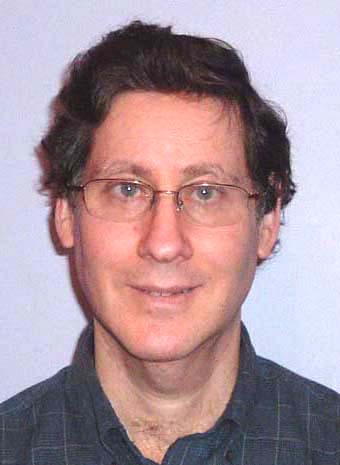 I’m in China this week, meeting with government, academia, and industry leaders in Guangzhou, Shenzhen, Beijing, Shanghai, and Suzhou. The twelve hour time difference means that I can work a day in China, followed by a day in Boston. For the next 7 days, I’ll truly be living on both sides of the planet. I recently delivered this policy update about the key developments in healthcare IT policy and sentiment over the past 90 days. I’ve not written a specific summary of the recently released Quality Patient Program proposed rule which provides the detailed regulatory guidance for implementation of MACRA/MIPS, but here’s the excellent 26 page synopsis created by CMS which provides an overview of the 1058 page rule...
I’m in China this week, meeting with government, academia, and industry leaders in Guangzhou, Shenzhen, Beijing, Shanghai, and Suzhou. The twelve hour time difference means that I can work a day in China, followed by a day in Boston. For the next 7 days, I’ll truly be living on both sides of the planet. I recently delivered this policy update about the key developments in healthcare IT policy and sentiment over the past 90 days. I’ve not written a specific summary of the recently released Quality Patient Program proposed rule which provides the detailed regulatory guidance for implementation of MACRA/MIPS, but here’s the excellent 26 page synopsis created by CMS which provides an overview of the 1058 page rule...
OAuth
See the following -
Grahame Grieve on What Project Argonaut Means for the HL7/FHIR Community
Project Argonaut was announced last week. You can see the announcement here. That press release was intended for an external community, and didn’t address lots of important questions for the HL7 community itself. So here’s an outline of what project Argonaut means in practice for HL7.
- Login to post comments
Halamka on MU3 Regs: The Good, The Bad, and the Ugly
 On Friday March 20, CMS released the Electronic Health Record Incentive Program-Stage 3 and ONC released the 2015 Edition Health Information Technology (Health IT) Certification Criteria, 2015 Edition Base Electronic Health Record (EHR) Definition, and ONC Health IT Certification Program Modifications. Perhaps the most important statement in the entire 700+ pages is the following from the CMS rule: "Stage 3 of meaningful use is expected to be the final stage and would incorporate portions of the prior stages into its requirements."
On Friday March 20, CMS released the Electronic Health Record Incentive Program-Stage 3 and ONC released the 2015 Edition Health Information Technology (Health IT) Certification Criteria, 2015 Edition Base Electronic Health Record (EHR) Definition, and ONC Health IT Certification Program Modifications. Perhaps the most important statement in the entire 700+ pages is the following from the CMS rule: "Stage 3 of meaningful use is expected to be the final stage and would incorporate portions of the prior stages into its requirements."
- Login to post comments
Halamka's Reflections on US Health IT Policy Trajectory
- Login to post comments
Navigation Between Heavy-weight and Light-weight Standardization (Part 2)

The previous section of this article laid out the context for HL7 FHIR standard and the Argonaut project; now we can look at the current status.Tripathi portrays the Argonaut process as radically different from HL7 norms. HL7 hasestablished its leading role in health standards by following the rules of the American National Standards Institute (ANSI) in the US, and similar bodies set up in other countries where HL7 operates. These come from the pre-Internet era and emphasize ponderous, procedure-laden formalities. Meetings must be held, drafts circulated, comments explicitly reconciled, ballots taken. Historically this has ensured that large industries play fair and hear through all objections, but the process is slow and frustrates smaller actors who may have good ideas but lack the resources to participate.
- Login to post comments
Notes on the April Meeting of the HIT Standards Committee
The April Standards Committee began with a tribute to Jon Perlin, who is leaving his chair role of the HIT Standards Committee so that he can focus on his chair role at the American Hospital Association. Jacob Reider, Deputy National Coordinator will serve as the Standards committee chair. I will continue as vice-chair. Read More »
- Login to post comments
Notes on the June Meeting of the HIT Standards Committee
The June HIT Standards Committee focused on an update and evaluation of the standards and interoperability framework initiatives, consistent with the overall theme of ONC’s recent reorganization and strategic plan to focus on fewer goals with a greater depth. Steve Posnack, who now leads the ONC Office of Standards and Technology, introduced the topic... Read More »
- Login to post comments
Notes on the October Joint Meeting of the Standards and Policy Committee
Today the future of interoperability was discussed and endorsed by a joint meeting of the Standards and Policy Committees. We began with a preamble clearly stating that the roadmap we’re working on is a process not a finished product. Karen DeSalvo, Jacob Reider, Paul Tang and I offered framing comments for the day... Read More »
- Login to post comments
ONC Holds A Key To The Structural Deficit
It’s called Blue Button+ and it works by giving physicians and patients the power to drive change. Read More »
- Login to post comments
OpenID Connect May Usher In A New Era Of Federated Online Identity
OpenID Connect is designed to replace username/password authentication. The protocol, in use by Google and others, may solve governments' needs to authenticate users accessing digital services...
- Login to post comments
Report on ONC’s Working Session on Patient Identity and Matching
 On Monday, August 31, I attended the final Working Session on Patient Identity and Matching. This virtual event was hosted by the Office of the National Coordinator for Health IT (ONC). This Working Session was a followup to an earlier session back in June 2020. The event last week had over 300 attendees and covered a wide range of topics and technologies related to patient identity and matching. These ONC Working Sessions are being driven by requirements that are part of the 21st Century Cures Act as well as a Congressional request from December 2019 to continue to "...evaluate the effectiveness of current [patient identity and matching] methods and recommend actions that increase the likelihood of an accurate match of patients to their health care data." Much of the focus of this study has been on whether a national patient identifier should be implemented in the US.
On Monday, August 31, I attended the final Working Session on Patient Identity and Matching. This virtual event was hosted by the Office of the National Coordinator for Health IT (ONC). This Working Session was a followup to an earlier session back in June 2020. The event last week had over 300 attendees and covered a wide range of topics and technologies related to patient identity and matching. These ONC Working Sessions are being driven by requirements that are part of the 21st Century Cures Act as well as a Congressional request from December 2019 to continue to "...evaluate the effectiveness of current [patient identity and matching] methods and recommend actions that increase the likelihood of an accurate match of patients to their health care data." Much of the focus of this study has been on whether a national patient identifier should be implemented in the US.
- Login to post comments
What the IoT can learn from the health care industry
 After a short period of excitement and rosy prospects in the movement we’ve come to call the Internet of Things (IoT), designers are coming to realize that it will survive or implode around the twin issues of security and user control: a few electrical failures could scare people away for decades, while a nagging sense that someone is exploiting our data without our consent could sour our enthusiasm. Early indicators already point to a heightened level of scrutiny — Senator Ed Markey’s office, for example, recently put the automobile industry under the microscope for computer and network security. Read More »
After a short period of excitement and rosy prospects in the movement we’ve come to call the Internet of Things (IoT), designers are coming to realize that it will survive or implode around the twin issues of security and user control: a few electrical failures could scare people away for decades, while a nagging sense that someone is exploiting our data without our consent could sour our enthusiasm. Early indicators already point to a heightened level of scrutiny — Senator Ed Markey’s office, for example, recently put the automobile industry under the microscope for computer and network security. Read More »
- Login to post comments